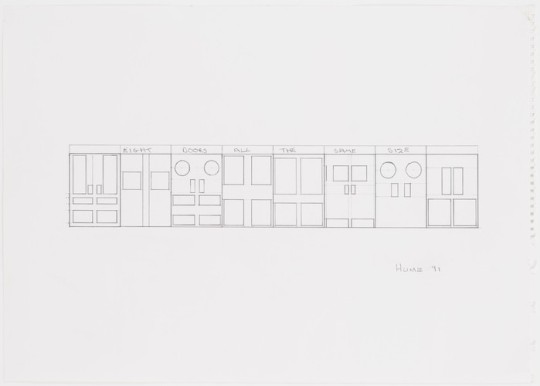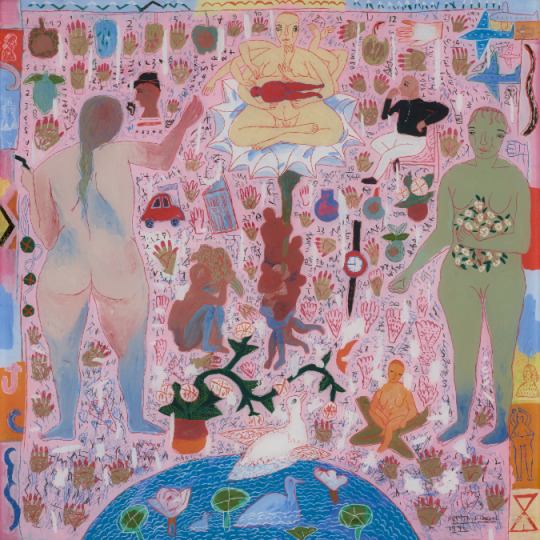#59.1%
Explore tagged Tumblr posts
Text

#Eight Doors All the Same Size#Gary Hume#1991#Size: 16 ½ x 23 ¼" (41.9 x 59.1 cm)#Medium: Pencil on notebook paper
8 notes
·
View notes
Text
"Моя сладкая роза", 1908
Английский художник: Джон Уильям Уотерхаус (John William Waterhouse, 1849 — 1917)
Холст, масло; 88.3×59.1 см
Частная коллекция

#“Моя сладкая роза”#1908Английский художник: Джон Уильям Уотерхаус (John William Waterhouse#1849 — 1917)Холст#масло; 88.3×59.1 смЧастн
0 notes
Text
You can't take one without the other!
guys hot uquiz was just discovered but I'm taking it about 100 yrs too late. anyways everyone share how wifeable you are.
THE WIFE RATING SCALE 1929

29K notes
·
View notes
Text

The Soul of the Rose, John William Waterhouse, 1908
Oil on canvas 34 ⅝ x 23 ¼ in. (88 x 59.1 cm)
#art#painting#john william waterhouse#pre raphaelite#pre raphaelite brotherhood#20th century art#20th century#oil#english#british
880 notes
·
View notes
Text
The Guardian:
Research published in the Lancet medical journal estimates that the death toll in Gaza during the first nine months of the Israel-Hamas war was about 40% higher than numbers recorded by the Palestinian territory’s health ministry. The peer-reviewed statistical analysis was conducted by academics at the London School of Hygiene & Tropical Medicine, Yale University and other institutions, using a statistical method called capture-recapture analysis. The researchers sought to assess the death toll from Israel’s air and ground campaign in Gaza between October 2023 and the end of June 2024, estimating 64,260 deaths due to traumatic injury during this period. The study said 59.1% were women, children and people over the age of 65. It did not provide an estimate of Palestinian combatants among the dead. Up to 30 June last year, the health ministry in Gaza reported a death toll of 37,877 in the war, which began on 7 October 2023 after the Hamas-led attack on southern Israel in which 1,200 people were killed and more than 250 taken hostages. According to Palestinian health officials, a total of more than 46,000 people have been killed in the Gaza war, from a prewar population of about 2.3 million. It has not been possible for international media to independently verify the death toll in Gaza as Israel does not allow foreign journalists into the territory. A senior Israeli official, commenting on the study published on Friday, said Israel’s armed forces went to great lengths to avoid civilian casualties. “No other army in the world has ever taken such wide-ranging measures,” the official said. “These include providing advance warning to civilians to evacuate, safe zones and taking any and all measures to prevent harm to civilians. The figures provided in this report do not reflect the situation on the ground.” The Lancet study said the Palestinian health ministry’s capacity for maintaining electronic death records had previously proven reliable, but deteriorated under Israel’s military campaign, which has included raids on hospitals and other healthcare facilities and disruptions to digital communications. Israel accuses Hamas of using hospitals as cover for its operations, which the militant group denies. The study used death toll data from the health ministry, an online survey launched by the ministry for Palestinians to report relatives’ deaths, and social media obituaries to estimate that there were between 55,298 and 78,525 deaths from traumatic injuries in Gaza up to 30 June 2024.
The study’s best estimate was 64,260 dead, which would mean the health ministry had under-reported the number of deaths to that point by 41%. The estimate represented 2.9% of Gaza’s prewar population, “or approximately one in 35 inhabitants”, the study said. The figure is only for deaths from traumatic injuries and does not include deaths from a lack of healthcare or food, or the thousands believed to be buried under rubble.
The Lancet’s study reveals that the death toll in Gaza is significantly higher than the official numbers, leading to the credence of claims that the death toll is undercounted.
257 notes
·
View notes
Text

René Magritte (Belgian, 1898-1967), L'école buissonnière [Truancy], 1946. Gouache on paper, 40.3 x 59.1 cm.
258 notes
·
View notes
Text
YES!! YOU GET IT
and the fact that (from what I have seen in fandom) the majority of omegaverse in fandom is written about gay male relationships further suggests that our society sees queer relationships and bodies as an "other" to be gawked at.
I find your last sentence VERY interesting because it's true! Like you said, alphas are dominant and posessive, omegas are weak and submissive, and betas are peacekeepers, anything else is non-traditional because a staple of heteronormativity is seeing queer relationships is a variation of heterosexual relationships.
I think that the omegaverse is the perfect example of this, because it's essentially forcing queer relationships into the societal expectations of the two partners in a heterosexual relationship (think: "who wears the pants in the relationship?" or "who's the man and who's the woman") because our society thinks in a binary.
Writing about queer relationships in an incredibly heteronormative way is just re-inventing the wheel. To me, as someone who puts way too much thought into the omegaverse, writing male/male omegaverse fics just becomes a fetishizing of gay male relationships and gay male bodies in a way that is (more or less) easier for nonqueer people to digest as it looks more akin to heterosexual relationships and the societal roles and expectations of both parties in a straight relationship.
i think we can study the omegaverse and how different secondary genders affect the physical portrayal of the character to better understand how heteronormativity affects our society but no one is ready for that conversation yet are we.
#omegaverse#a/b/o dynamics#alpha beta omega#a/b/o#AUUUUGGGHHH I love talking about fanfiction and queerness#like fun fact#i did a research paper for my class and i surveyed 33 fandoms on ao3 and about 59.1% of the 383k works i surveyed#were tagged with a m/m relationship#and it's sooooooo fascinating to think about#and it's unfortunate that the omegaverse was just a bit too niche for me to research#because i think an analysis could seriously help us understand our binary society
58 notes
·
View notes
Text

Garden - Vicente Gandía , 2000.
Spanish-Mexican , 1935-2009
Acrylic on canvas , 150 x 200 cm. 59.1 x 78.7 in.
72 notes
·
View notes
Text

74 by sarah benslimane, 2024, mixed media on wood, 78.7 × 59.1 inches
69 notes
·
View notes
Text

Giuseppe Maria Mazza, 1653–1741
Bust of Diana, 1687/1700, marble, 67.9×59.1×27.9 cm
Art Institute of Chicago Inv. 1988.277
48 notes
·
View notes
Text
#TurtleTuesday:

Jacques Hnizdovsky (Ukrainian-American, 1915-1985)
Turtle, 1962
woodcut, 15 3⁄4 x 23 1⁄4 in. (40.0 x 59.1 cm)
Smithsonian American Art Museum 1967.77.7
(probably a Radiated Tortoise)
#animals in art#20th century art#illustration#Jacques Hnizdovsky#Smithsonian American Art Museum#print#woodcut#graphic art#graphic design#turtle#tortoise#Radiated Tortoise#Turtle Tuesday
238 notes
·
View notes
Text

Luis Ricardo Falero (1851-1896), A Fairy under Starry Skies (n.d.), oil on canvas, 103.5 x 59.1 cm.
50 notes
·
View notes
Text

Perpetual Care, Andrew Wyeth, 1961
Drybrush on paper 29 x 23 ¼ in. (73.7 x 59.1 cm)
#andrew wyeth#art#painting#realism#modern art#american modernism#1960s#20th century#20th century art#cemetery#graveyard#drybrush#100 notes
186 notes
·
View notes
Text

Arpita Singh (b.1937), Feminine Fables, 1996. Reverse painting in acrylic on acrylic sheet. 23¾ x 23¼ in (60.3 x 59.1 cm). Sold for $163,800 in Centering the Figure: South Asian Modern + Contemporary Art from the Collection of Romi Lamba on 21 September 2022 at Christie's in New York
16 notes
·
View notes
Text
Epic fan favorite song bracket
Welcome to the Epic fan favorite song bracket! I plan to update this post as a master list, but this is my first time doing this so we’ll see. Below is the bracket. It’s a tournament style format, but due to the 40 songs it is formatted a bit oddly. Each song will have to make it out of its own saga first (besides the underworld saga since it is only 3 songs it has been dispersed to compete in the Cyclops saga, Ocean saga, and Circe saga since they only had 4 songs.)
Rules:
Please be kind to everyone! We all have a favorite song and even if it doesn’t go through to the next round we should be respectful to everyone.
You can advertise for your preferred song, but I will not in order to try and remain unbiased (I already know my song isn’t going to win and I have accepted that)

Round 1:
Just a Man vs Full Speed Ahead: 70%
Polyphemus vs Survive: 71.1%
Storm vs Luck Runs Out: 55.8%
Puppeteer vs Wouldn’t You Like: 74%
Different Beast vs Scylla: 69.6%
Little Wolf Vs We’ll Be Fine: 73.6%
Dangerous vs Charybdis: 83.3%
Hold Them Down vs Odysseus: 74.5%
Round 2:
The Horse and the Infant vs Just a Man: 58.6%
Open Arms vs Warrior of the Mind: 65.5%
The Underworld vs Survive: 62.1%
Remember Them vs My Goodbye: 53.6%
No Longer You vs Storm: 83.3%
Keep Your Friends Close vs Ruthlessness: 82.8
Monster vs Wouldn’t You Like: 54.8%
Done For vs There are Other Ways: 53.3%
Suffering vs Scylla: 74.2%
Mutiny vs Thunder Bringer: 72.4%
Legendary vs Little Wolf: 51.9%
Love in Paradise vs God Games: 89.3
Not Sorry for Loving You vs Dangerous: 86.7%
Get in the Water vs Six Hundred Strike: 71.9%
The Challenge vs Odysseus: 52.4%
I Can’t Help but Wonder vs Would You Fall in Love with Me Again: 84.7%
Round 3:
Just a Man vs Warrior of the Mind: 55.6%
The Underworld vs Remember them: 51.2%
No Longer You vs Ruthlessness: 56.2%
Wouldn’t You Like vs There Are Other Ways: 64.4%
Scylla vs Thunder Bringer: 64.4%
Little Wolf vs God Games: 55.8%
Dangerous vs Get in the Water: 68.9%
Odysseus vs Would You Fall in Love with Me Again: 65.4%
Round 4:
Warrior of the Mind vs Remember Them: 61.5%
No Longer You vs Wouldn’t You Like: 70%
Scylla vs Little Wolf: 59.1%
Dangerous vs Would You Fall in Love with Me Again: 64%
Semifinals:
Warrior of the Mind vs No Longer You: 63.1%
Scylla vs Would You Fall in Love with Me Again: 66.7%
Third Place:
Warrior of the Mind vs Scylla: 51.1%
Finals:
No Longer You vs Would You Fall in Love with Me Again: 64%
WINNER:
Would You Fall in Love with Me Again
#epic the troy saga#epic the cyclops saga#epic the ocean saga#epic the circe saga#epic the underworld saga#epic the thunder saga#epic the wisdom saga#epic the vengeance saga#epic the ithaca saga#epic the musical#epic
40 notes
·
View notes
Text

Norbertine Bresslern-Roth (1891-1978) - Diana
Oil on jute. Painted c.1940-41.
47.25 x 59.1 inches, 120 x 150 cm. Estimate: €100,000-200,000.
Failed to sell im Kinsky, Vienna, 19 June 2024.
54 notes
·
View notes